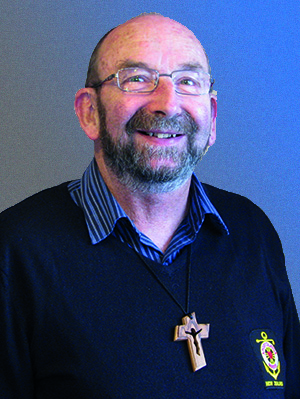Mary at Pentecost and in the new-born Church
This month we celebrate Pentecost, the feast of the Church being born in the fire of the Holy Spirit.
One in mind and heart and gathered around Mary, the first believers gave strong witness to the resurrection of Jesus (Acts 2:1-4, 42-47), and to the joy that comes from being part of something extraordinarily wonderful. I’m sure they hoped that it would always be like that.
As we know from the Acts of the Apostles, though, keeping the original vision and ideals in mind and living according to them became difficult. Shortcomings, weakness and sinfulness – the usual stuff of the human condition – became evident in the day-to-day life of the early Church. The fire of Pentecost dimmed in the face of boring old sinfulness and tedious human weakness.
When we come face to face with our failures and those of others it can be difficult to hold to the vision and the ideals of the faith we profess. It’s vital that we try to do so, though. If we don’t try to live up to the ideals and founding vision of our faith as we find them in the Acts of the Apostles, then we may as well draw the blinds and sit in the dark until we die.
Down the ages many founders of religious congregations have looked to the second chapter of Acts for their example of what they wanted their congregations to be like: faithful to apostolic teaching, to community, to Eucharist and to prayer, one in heart and mind, sharing all things in common, preaching and living the Good News.
Fr Jean-Claude Colin was the Founder of the Society of Mary and its Superior General for eighteen years. The image of Mary that Fr Colin most often used to encourage Marists was that of Mary at Pentecost, in the midst of the new-born Church. On one occasion he said Mary ‘did more than the apostles for the new-born Church; she is the Queen of the apostles, but she did it without any stir, she did it above all by her prayers’ A Founder Speaks, 190 # 2.
Among a number of sources on the basis of which he reflected on Mary in the new-born Church, Fr Colin was influenced by The Mystical City of God, by Mary of Agreda, a 17th century mystic. She wrote of visions and imaginings of what life was like in the Church’s early days.
Mary of Agreda presents Our Lady as being at the service of the apostles, obeying them, ‘listening to them like a simple disciple, making absolutely nothing of her position as Queen of the Apostles or Mother of the Messiah, but truly fitting right into the community.’
This notion inspired Fr Colin. Mary works harmoniously with the other members of the community, doing so without making herself the centre of attention, or claiming privilege or superior status. This representation of Mary gave the Marist founder a model for the congregation he led.
Mary is in the centre in the early Church, not saying much, listening carefully to everyone, not claiming to be the only one who can resolve issues, nor arguing from authority. Like any mother, Mary desires that her family will live and flourish in love of one another.
Again and again, Fr Colin says that the Church at its birth is the model for Marists. I believe it’s also a model for the whole Church, as we endeavour, despite our sinfulness, to be one in heart and mind, in Christ, and like Mary.

 Entries(RSS)
Entries(RSS)